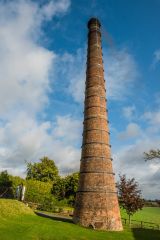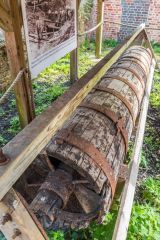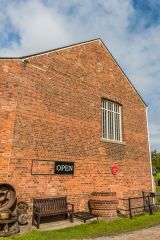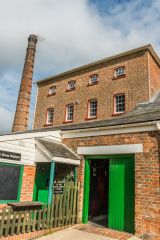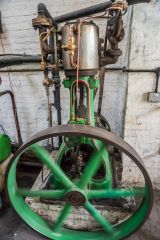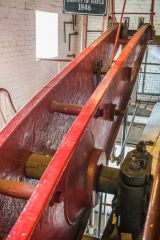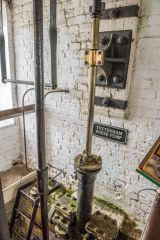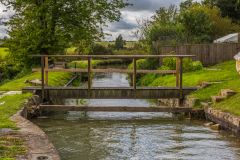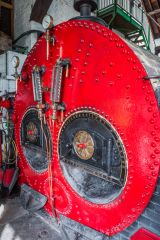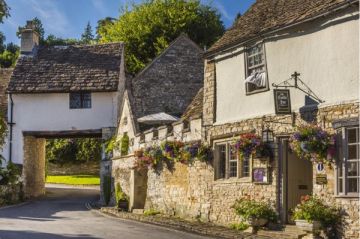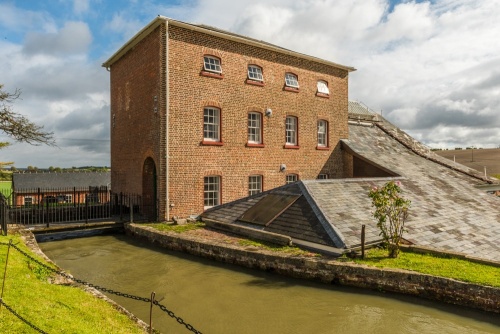
The Kennet and Avon Canal was built between 1794 and 1810, linking the River Kennet to the River Avon and making both rivers navigable to Newbury at the eastern end and Bath in the west.
History
The Canal made travel between London and Bath safe and relatively efficient by the standards of the day, and helped transform Bath into a fashionable spa town. It also created new trade opportunities, carrying Bath stone to London and food and coal to Bath.
The canal created the first easy transport route across southern England.
But there was a problem.
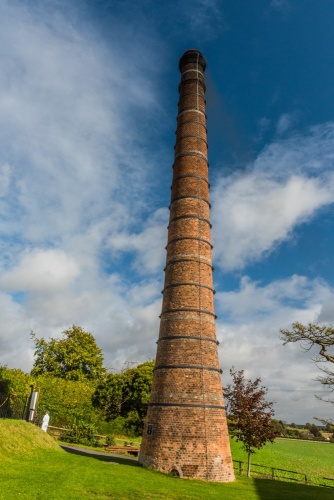
The highest point on the canal system was between the Wiltshire villages of Crofton and Burbage. Initial designs drawn up by the Scottish engineer John Rennie called for a 2.5-mile tunnel between the two villages, effectively negating the rise in elevation. But tunnelling was expensive, so the canal backers looked for a cheaper alternative.
The solution was to build a much shorter section of tunnel and raise the water summit. The new summit would be 40 feet above the nearest reliable water source, so a pumping station would be needed to make sure the water could supply the tunnel.
So, in 1807 Crofton Pumping Station was erected about 3/4 mile east of the canal's summit and supplied with first one, then two steam pumps to keep the summit of the canal supplied with water via a leat, or specially-built channel.
The first engine was a 36-inch bore Boulton & Watt, with a wooden beam, installed in 1809. It was bought second-hand, having been purchased from the West India Dock Company in 1802. It had an 8-foot stroke and powered a 26-inch diameter lift pump.
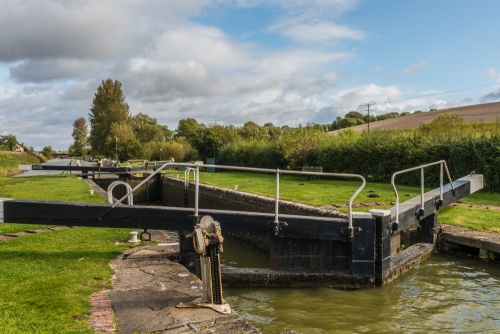
Three years later in 1812, a 42-inch bore Boulton and Watt engine was installed beside the first. This is now the oldest beam engine in the world in its original setting and still used for its original purpose.
Power to the two Boulton & Watt engines as supplied by three Waggon boilers. Water was fed to the engines from Wilton natural springs and a well in the pumping station. The pumps raised this water 40 feet and emptied it into the leat.
The commercial success of the Kennet and Avon Canal meant that traffic increased faster than expected and the pumps could not keep the water at the required level. The solution was to create Wilton Water, an 8-acre manmade lake created by damming the valley across from the pumping station. Wilton Water fed through a culvert to the well under the pump house.
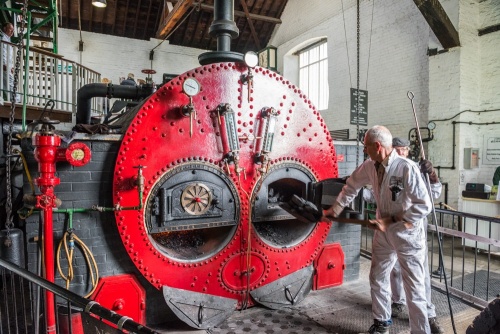
In 1843 three new Cornish boilers were installed, with a working pressure of 20psi.
Then in 1846, the 36-inch bore engine was replaced by a Sims Combined Cylinders Engine built by Harvey of Hayle.
Both the 1812 Boulton & Watt and the 1846 Harvey engine are still in working order and both engines are regularly in steam during the summer months. The engines still carry out the job they were installed to do; when they are under steam, the electrical engines that control water levels on the canal today are switched off, so that the water level is controlled only by the beam engines.
In fact, one of the beam engine volunteers told us that under some conditions the steam pumps are the only reliable way to keep the canal's water level where it should be, and they work even when the electric pumps cannot.
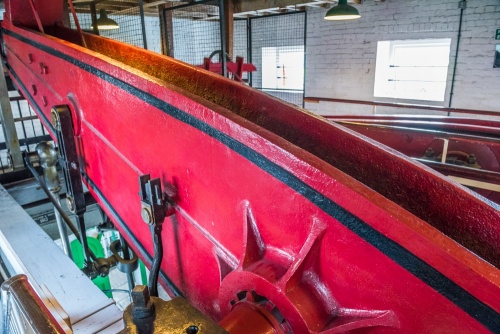
The beam engines were decommissioned after WWII, and the pumping station was scheduled to be torn down. Thankfully, no contractor considered it an economically viable operation, so the station and its engines were left to decay. In 1968 the Kennet and Avon Canal Trust bought the entire site, restored the engines, and opened the pumping station to the public in 1970.
What to See
Archimedean Screw water pump
Housed in a lean-to shed outside the pumping house is a wooden screw pump, whose design is attributed to the Greek mathematician Archimedes, though it was probably invented long before his time. The pump is made of wood held together with iron bands, with intricate compound curves on the screw section.
Just inside the pump house entrance is a Lancashire Boiler, made by the Great Western Railway's Swindon workshop and installed in 1896. This boiler is no longer in use, but it gives a good idea of how similar boilers were built.
Another very similar Lancaster boiler is in use a few feet away, fed by coal, and providing power to the beam engines. When the engines are in steam you can see volunteers shovelling coal into the boiler firebox. This boiler needs about 1.25 tons of coal daily to keep the beam engines powered.
Against one wall of the pump house is a display of industrial steam engines including a Marshall steam engine made to keep patients warm at the Lord Mayor Treloar Hospital in Alton, Hampshire from 1925. Then there is a Green's Economiser, invented by Edward Green in 1845. This engine used hot gas to preheat water fed to the boiler, thus harnessing heat that might otherwise be lost.
The 1812 Engine
This 6-tonne cast iron beam was cast in Soho, Birmingham and came to Crofton by barge in 1811. It is the oldest bean engine in the world still doing its original job.
The 1846 Engine
The third engine to be installed at Crofton, it replaced the first, installed in 1809. It weighs some 4.5 tonnes.
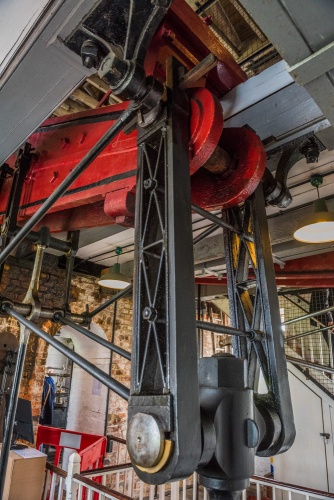
The Tottenham House Pump
The land used to create the Wilton Water reservoir was owned by the Marquis of Ailesbury, owner of Tottenham Park. His Lordship agreed to let the canal company create the reservoir on his land, but in return wanted 2,000 gallons per day to help irrigate his farmland. Small, high-pressure pumps were fitted to the engines to raise this extra water 160 feet higher than the main leat. One of these high-pressure pumps is on display.
The Canal
A set of steps leads from the pumping station down to a lock on the Kennet and Avon Canal. If you are lucky you can see boats going through the lock, a process that hasn't changed for 200 years.
The Chimney
The eye-catching chimney stack stands separate from the engine house on slightly higher ground. It is 82 feet high and is built with over 11,000 bricks.
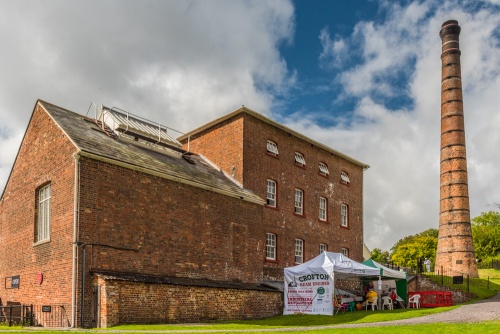
There is a popular cafe on-site and numerous bits and pieces of industrial equipment on display.
Crofton Beam Engines is an absolute delight to visit. The site is staffed by enthusiastic volunteers who were genuinely delighted to share their knowledge about the beam engines and the history of the pumping station and the canal. The location is simply idyllic, with views out over the canal and Wilton Water.
Getting There
The beam engines are very well signposted from nearby roads. The pumping station is located on the minor road just west of Crofton village. There is a small car park opposite the entrance on the north side of the road.
About Crofton Beam Engines
Address: Crofton,
Wiltshire,
England, SN8 3DW
Attraction Type: Museum - Industrial Heritage
Location: On a minor road south-west of Crofton village. Very well signposted. Free car park opposite the site.
Website: Crofton Beam Engines
Email: crofton@katrust.org.uk
Location
map
OS: SU261622
Photo Credit: David Ross and Britain Express
HERITAGE
 We've 'tagged' this attraction information to help you find related historic attractions and learn more about major time periods mentioned.
We've 'tagged' this attraction information to help you find related historic attractions and learn more about major time periods mentioned.
Find other attractions tagged with:
NEARBY HISTORIC ATTRACTIONS
Heritage Rated from 1- 5 (low to exceptional) on historic interest
Wilton Windmill - 1 miles (Historic Building) ![]()
East Grafton, St Nicholas Church - 1.2 miles (Historic Church) ![]()
Great Bedwyn, St Mary's Church - 1.7 miles (Historic Church) ![]()
Chisbury Chapel - 2.5 miles (Historic Church) ![]()
Chisbury Camp - 2.5 miles (Prehistoric Site) ![]()
Little Bedwyn, St Michael's Church - 3 miles (Historic Church) ![]()
Savernake Forest - 3.6 miles (Countryside) ![]()
Littlecote Roman Villa - 5.7 miles (Roman Site) ![]()
Nearest Holiday Cottages to Crofton Beam Engines:
Marlborough, Wiltshire
Sleeps: 6
Stay from: £669 - 2657
More self catering near Crofton Beam Engines
